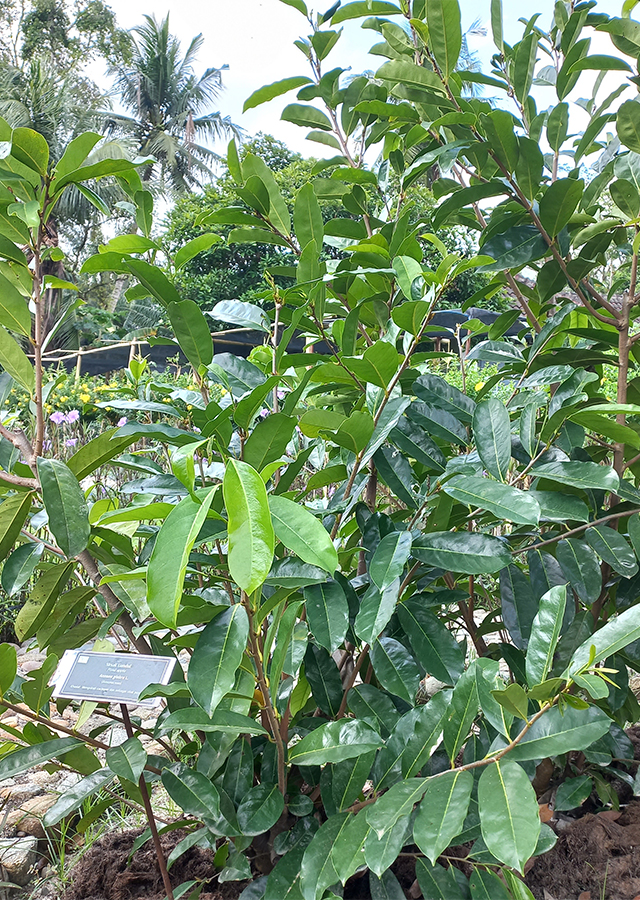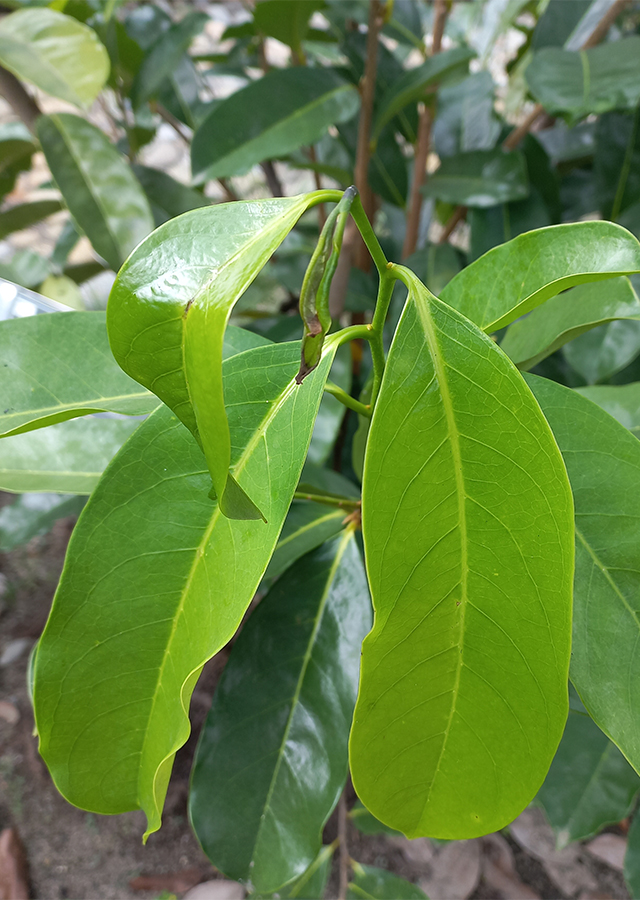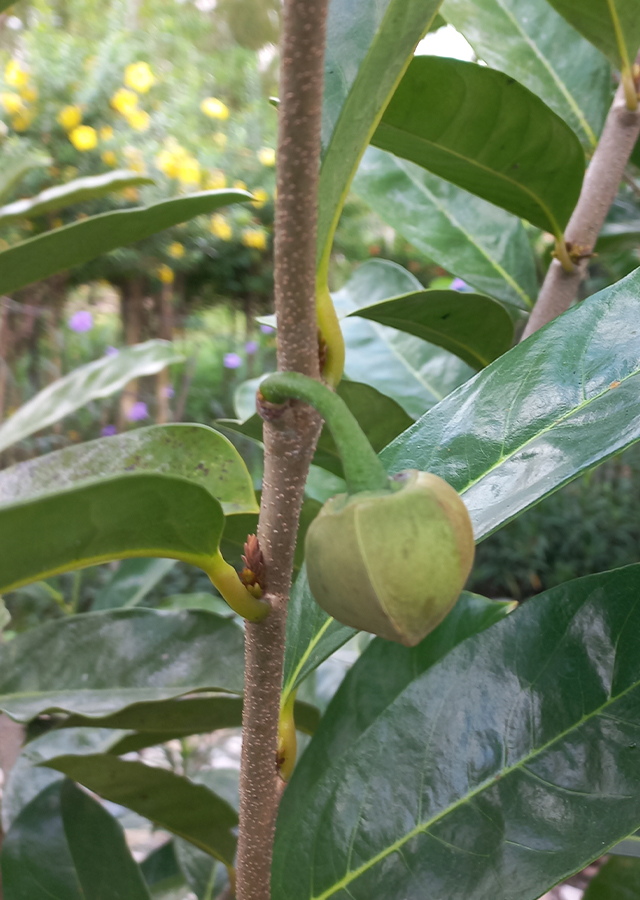Pond Apple
Annona glabra L.
Annonaceae
Location in our garden
Orchard



Synonym
Annona australis A.St.-Hil.
Annona palustris L.
Annona laurifolia Dunal
Habitus
Trees. An evergreen tree growing up to 13 m tall
Part Used
Leaves
Seeds
Bark
Stem
Growing Requirements
Full Sunshine
Habitat
Wetland
Riverbanks
Forest
Coastal
Terrestrial
Overview
A. glabra was introduced from its native tropical America and West Africa as a potential crop and rootstock for commercial Annona species. The edible fruit is often harvested from the wild and used locally, whilst the tree has local medicinal uses and is a source of various materials.
Vernacular Names
Anon de puerco (Spanish), Annone des marais (French), Araticu-do-Brejo (Brazil), Alligatorapfel (German), Zuurzak (Dutch).
Agroecology
A plant of the humid, lowland tropics. The plant can survive occasional, short-lived, very light frosts with temperatures down to 0 °C. Prefers a moist sandy loam and a pH of about 6. This species tolerates wetter conditions than most other members of the genus.
Morphology
- Trunks - usually a single bole, with a swollen base when young or narrowly buttressed when mature. Stems grey with prominent lenticels.
- Leaves - alternate, 7-12 cm long, and up to 6 cm broad, oblong-elliptical, acute or shortly acuminate, light- to dark-green above and paler below, with a prominent midrib and a distinctive small fold where the leaf blade joins the leaf stalk.
- Flowers - short-lived and rarely noticed, 2-3 cm in diameter, pale-yellow to cream with three leathery outer petals and three smaller inner petals, pedicel curved, expanded distally; sepals 4.5 mm long, 9 mm broad, apiculate; outer petals valvate, ovate-cordate, cream-coloured with a crimson spot at base within, 2.5-3.0 cm long, 2.0-2.5 cm broad; inner petals subimbricate, shortly clawed, 2.0-2.5 cm long and 1.5-1.7 cm broad, whitish outside, bright-red to dark-crimson within; stigmas sticky, deciduous.
- Fruits - green turning yellow or orange when ripe, spherical or elongated, 5-15 cm in diameter, looking like a smooth-skinned custard apple, pulp pinkish-orange, rather dry, pungent-aromatic.
- Seeds - light-brown, each 1.5 cm long, 1 cm broad.
Cultivation
- Propagated by seeds - Sow in individual pots, not deeper than 2 cm, at 21 °C. Seeds may be sown directly into the field or in a nursery bed. A germination rate of 60 - 70% can be expected, with the seeds sprouting within 50 - 60 days. Seedlings are ready to plant out 7 - 8 months later.
- By semi-ripe cuttings.
Chemical Constituents
Acetogenins, ent-kauranes, peptides, and alkaloids (liriodenine alkaloids).
Traditional Medicinal Uses
- The leaves and young stems, sometimes combined with the leaves and stems of Passiflora foetida, are boiled to make a tea which is drunk to destroy flatworms and nematodes.
- The bark and the leaves, combined with the bark and leaves of Annona squamosa, are used as a sedative and cardiotonic infusion.
Part Used
Reference Sources
- Fern, Ken. Useful Tropical Plants. (2021). Annona glabra. http://tropical.theferns.info/viewtropical.php?id=Annona+glabra. 15-12-21.
- Cabi. Annona glabra. https://www.cabi.org/isc/datasheet/5811. 15-12-21.


